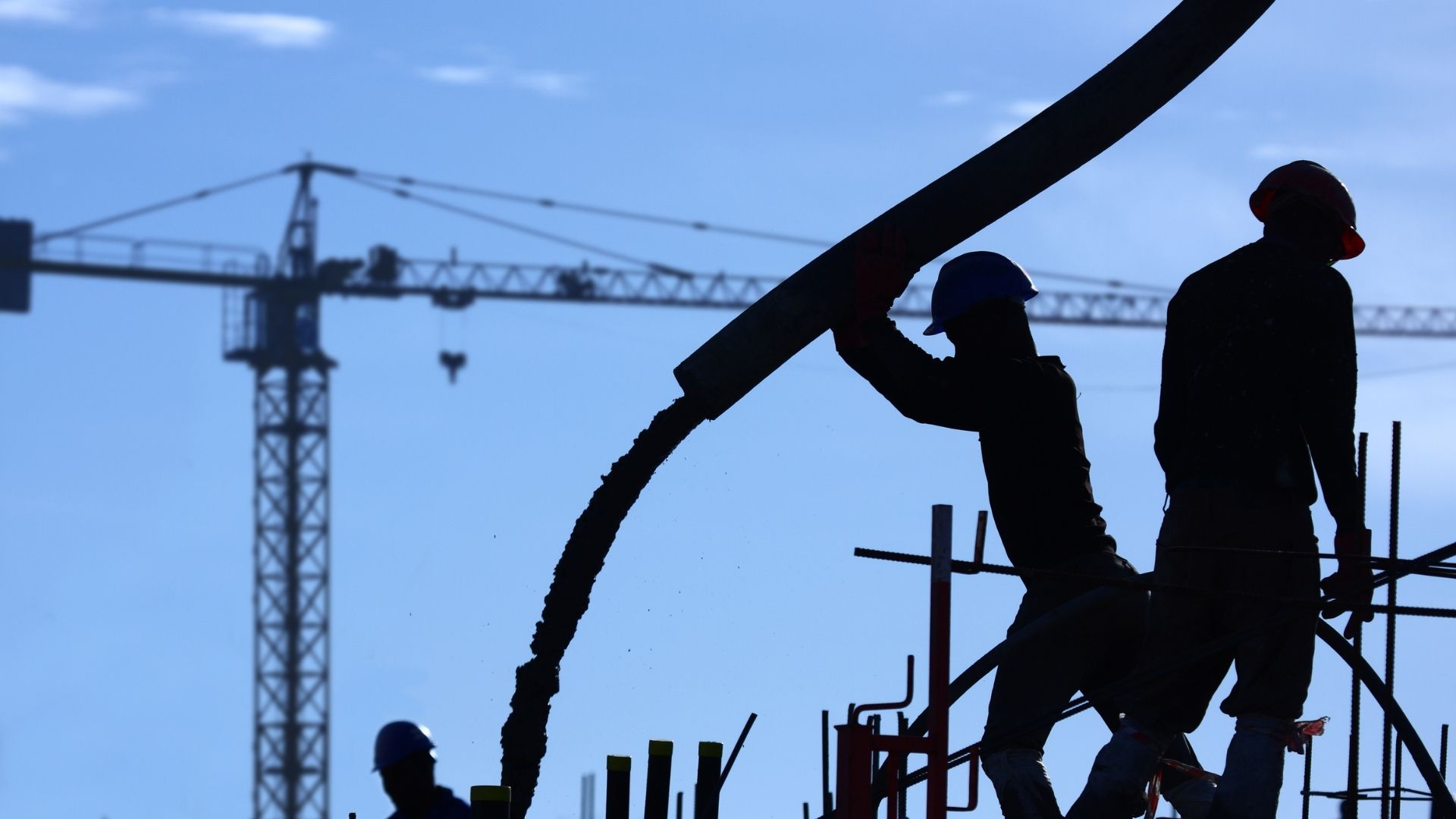
How to Link Construction Sales KPIs Directly to Revenue Outcomes
In today’s construction industry, success is no longer measured only by the number of bids submitted or projects won. Companies need to connect construction sales KPIs directly to revenue outcomes to track real growth. Key performance indicators (KPIs) provide measurable insights into sales activity, project progress, and profitability, but the real value emerges when these metrics are tied to revenue. By aligning KPIs with financial goals, construction sales teams can transform data into actionable strategies. For example, companies using tools like Building Radar can identify early-stage projects and track how those leads translate into revenue.
As competition intensifies, sales teams must rely on more than intuition. Platforms that combine AI-powered project discovery with structured performance tracking are becoming essential. Sales teams that can analyze metrics—such as win rates, deal velocity, and pipeline conversion—gain a significant competitive edge. Resources like Plecto’s KPI examples illustrate how specific KPIs align with real outcomes, but tools like Building Radar’s features push this further by connecting data directly to new opportunities, ensuring KPIs move beyond theory into measurable financial impact.
Why Linking Sales KPIs to Revenue Matters
KPIs such as lead conversion, sales cycle length, and bid-to-win ratio are valuable on their own. However, unless they are tied to revenue, they provide only partial insight. Sales teams need to answer not just how many opportunities exist but how much revenue those opportunities generate.
By linking KPIs to revenue, construction firms can:
- Identify which sales activities bring the highest return.
- Reduce wasted effort on low-yield opportunities.
- Forecast revenue based on measurable activity.
- Align sales behavior with company financial goals.
This approach ensures every tracked metric contributes to growth rather than just reporting on activity.
Core Construction Sales KPIs That Impact Revenue
Not all KPIs are created equal. Here are the most critical ones for construction sales teams aiming to connect performance with revenue:
1. Lead-to-Opportunity Conversion Rate
This KPI shows how well initial inquiries or discovered projects convert into qualified opportunities. When tied to revenue, teams can identify which lead sources bring the highest value projects.
2. Bid-to-Win Ratio
One of the most critical construction metrics, this KPI demonstrates how many bids submitted translate into wins. Tracking revenue generated from successful bids clarifies which projects deliver the strongest ROI.
3. Sales Cycle Length
Construction sales often involve long decision-making processes. Reducing cycle length can accelerate revenue. AI tools like Building Radar’s project tracking help sales teams move faster by targeting early-stage opportunities.
4. Pipeline Value and Forecast Accuracy
Sales pipeline metrics, when connected to actual revenue outcomes, help leaders predict future cash flow and allocate resources effectively.
5. Customer Lifetime Value (CLV)
For long-term projects, measuring CLV ensures teams understand how repeat business and upselling affect total revenue outcomes.
The Role of Data in Connecting KPIs to Revenue
Data is the backbone of sales measurement. Construction companies can no longer afford fragmented reporting systems. With solutions like Pipeline CRM’s industry KPI examples, teams can track key data points. However, what sets apart advanced tools like Building Radar is their ability to integrate project intelligence into revenue-focused reporting.
By capturing project data at the earliest stage, sales teams can predict potential revenue before competitors are even aware of an opportunity. This early insight ensures KPIs like opportunity conversion rates have a direct path to financial results.
Early-Stage Project Insights: Driving Predictable Outcomes
Revenue outcomes depend heavily on how early a sales team can act. Identifying projects before they go public allows companies to build relationships, shape specifications, and improve win rates.
With Building Radar’s AI technology, sales teams gain early visibility into global projects, enabling them to connect KPIs such as early-stage lead volume with actual revenue wins. This first-mover advantage significantly improves the ROI of sales activity.
How Sales Teams Can Operationalize KPIs
It’s not enough to simply track KPIs—sales teams must embed them into everyday processes. Here are some ways:
- Set revenue-focused targets for KPIs: Example: Increase the bid-to-win ratio by 10% to drive $5M in new revenue.
- Integrate CRM systems with AI tools: Platforms like Building Radar integrate with Salesforce and HubSpot, ensuring KPI data flows directly into financial reports.
- Adopt clear reporting dashboards: Using visualization tools like Klipfolio’s sales KPI examples, sales managers can connect activity metrics to outcomes in real time.
- Train teams on data-driven selling: KPIs are only valuable if sales reps understand how their actions affect measurable outcomes.
Overcoming Challenges in KPI-to-Revenue Alignment
Even with the right KPIs, construction companies often face barriers such as:
- Fragmented data sources leading to inconsistent reporting.
- Long sales cycles that make it difficult to attribute revenue directly to actions.
- Cultural resistance to data-driven selling.
Solutions like Building Radar’s revenue engineering software address these challenges by streamlining data, shortening sales cycles through automation, and providing sales teams with AI-powered insights that directly connect activity to revenue impact.
Case Examples: When KPIs Drive Real Outcomes
- Improving Win Rates Through Bid Analysis
A construction firm tracking its bid-to-win ratio discovered most wins came from projects identified early. By tying this KPI to revenue outcomes, the company shifted resources to early-stage tracking and increased revenue by 20%. - Shortening Sales Cycles with AI
Another contractor adopted Building Radar’s project discovery tools and reduced its sales cycle by 25%. By aligning cycle time KPIs with revenue, the company improved cash flow and resource allocation. - Maximizing CLV with Repeat Business
Through KPI tracking, a materials supplier realized long-term contracts generated 40% more revenue than one-off deals. This insight led to a strategic focus on repeat clients, directly boosting outcomes.
Building Radar’s Role in Revenue-Linked KPIs
At the intersection of data-driven KPIs and real revenue growth stands Building Radar. The platform’s AI-powered construction intelligence enables sales teams to identify early opportunities, connect project activity to measurable KPIs, and ultimately tie every action to financial outcomes.
Building Radar’s benefits include:
- Early project identification for first-mover advantage.
- Seamless CRM integration for revenue-linked KPI reporting.
- Over 45 filters to ensure teams track only relevant opportunities.
- Automated outreach and workflow tools that reduce wasted effort.
By embedding these features into daily sales processes, construction companies can directly measure how KPIs translate into revenue growth.
Driving Growth Through Smarter KPI Alignment
Construction sales teams that treat KPIs as mere performance snapshots miss the bigger picture. True growth happens when KPIs are directly tied to revenue outcomes, ensuring every sales activity contributes to financial success. By adopting AI-driven project intelligence, integrating with CRMs, and focusing on revenue-driven targets, sales leaders can create a sustainable, predictable growth model.
Tools like Building Radar empower teams to move from activity-based measurement to outcome-based success. For firms competing in today’s fast-paced construction market, aligning KPIs with revenue is not optional—it’s the foundation of long-term profitability.
Relevant Resources
- Building Radar Official Website
- Building Radar Features
- Building Radar Construction Projects
- Building Radar Tenders
- Building Radar Reference Customers
- Building Radar Insights
- Building Radar Revenue Potential Calculator



.jpg)